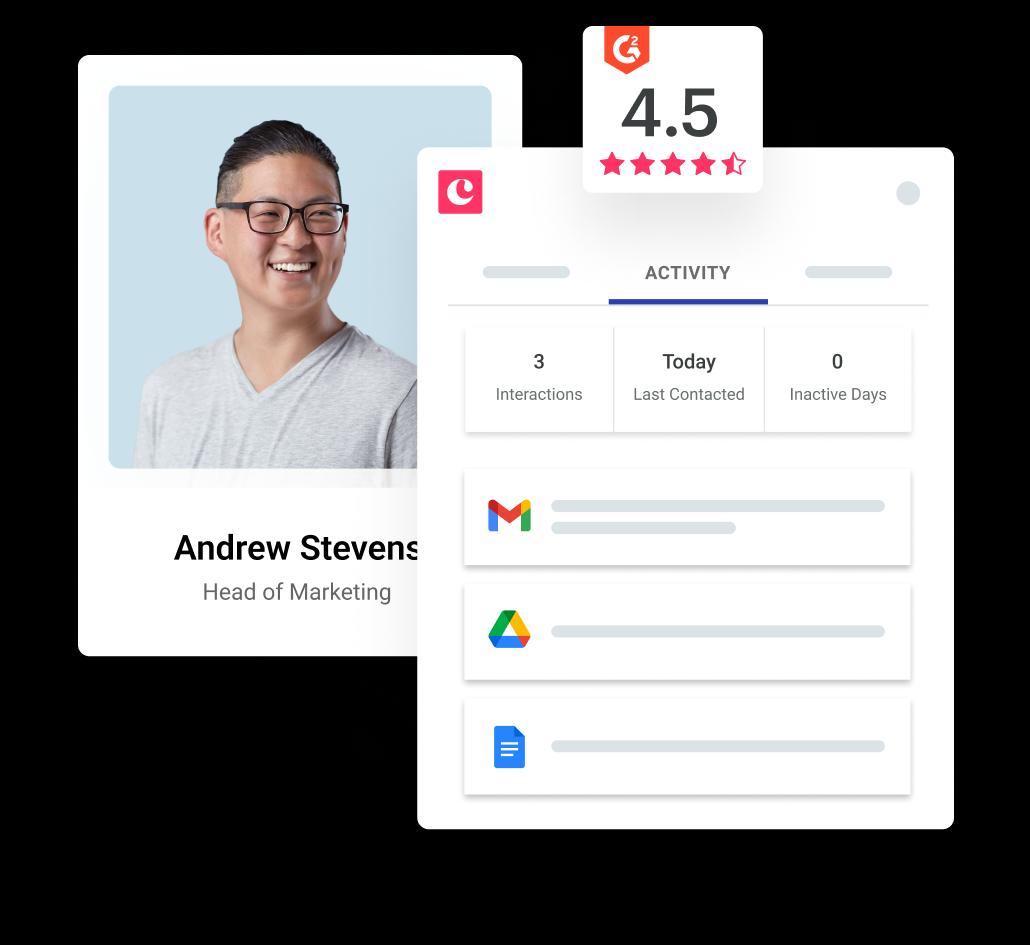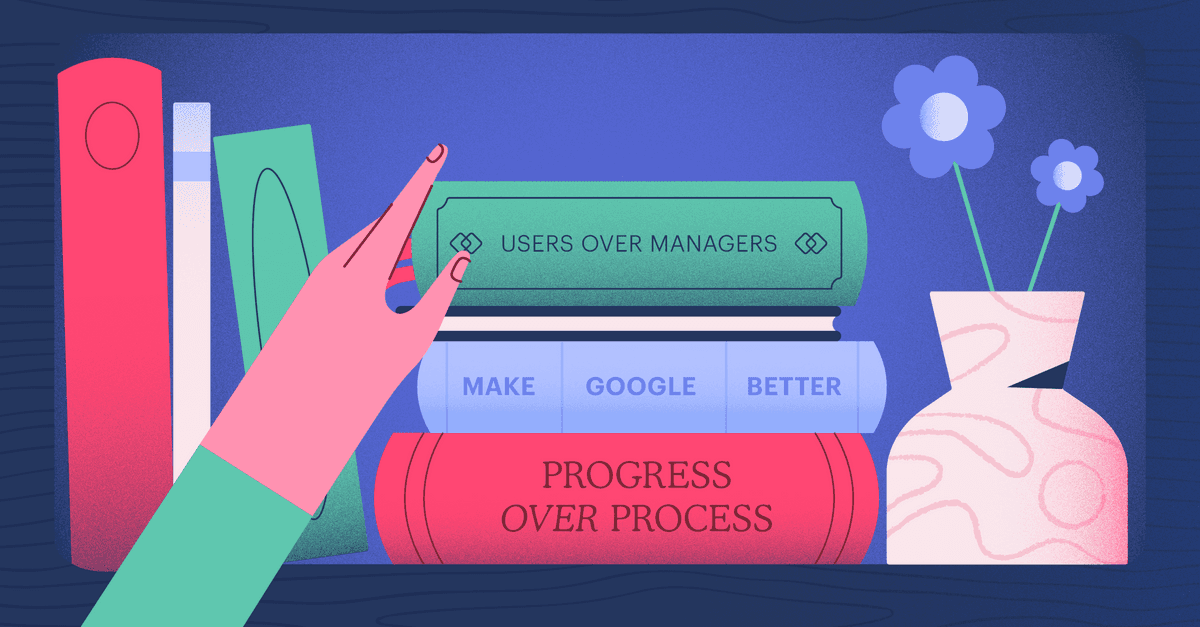
Michelle Lee
Customer Enablement Manager
When it comes to building a lasting, competition-proof business, customer service is the name of the game.
Accenture estimates that US companies have lost out on an incredible $1.6 trillion because of customers switching as a result of poor customer service.
And when customers are dissatisfied, the news spreads a lot faster. American Express found that the average happy customer shares a good experience with about 11 people, while an angry customer shares their bad experience with 15.
This shows how important it is to make sure you’re meeting (and hopefully exceeding) your customers’ expectations.
In this post, we’ll look at:
- What it means to be customer service oriented
- 4 ways to become more customer service oriented
- Real-world examples of customer service oriented companies
Let's get going.
What does it mean to be customer service oriented?
Being customer service oriented is about more than just knowing how to put out a fire quickly. It’s a proactive (as opposed to reactive) take on making—and keeping—your customers happy. Part of this formula means understanding your customers well enough to anticipate their needs.
The chart above does a good job of illustrating three levels of customer service orientation:
- Level 1 is purely reactive and not particularly involved in working one-on-one with customers to solve their issues.
- Level 2 is more engaged with customers, working with them and ensuring that strong relationships are built along the way.
- Level 3 is proactive, ensuring that all issues are handled while doing your own research to try and make sure that future issues are minimized to the best of your abilities.
Part of being a Level 3 customer service oriented business is always listening and asking questions. These businesses use repeatable systems to make efficient use of strategies and processes that have proved to be successful in the past. This keeps them focused on what works and reduces time, budget, and effort wasted on what doesn’t.
Pro-tip: You could also leverage feedback tactics like surveys and interviews to regularly check in with customers, which can help you gather customer feedback on how you’re doing. Let’s dive into a few more ways to become more customer service oriented.
4 ways to become more customer service oriented
Now that you know the what and why, let's dive into how to actually be more customer service oriented!
1. Understand customer attitudes through social listening
Social listening tools like Sprout Social and Mention can help you track what people are saying about your company online. These tools work by setting up alerts whenever your brand is mentioned, so you can see what people are saying as they’re saying it.
For example, international hotel chain Hilton uses social listening to keep a positive conversation about their brand while making sure that every customer query is addressed. This screenshot from Awario shows Hilton’s total mentions, and how many are positive versus negative.
In addition to tracking mentions of your company, using a tool like this can help you respond faster to unhappy customers. When this customer tweeted about their bad experience, Hilton was quick to reach out and offer a solution:
In addition to handling customer service queries, social listening will also give you an opportunity to show your brand’s personality, even when your audience wasn’t specifically asking for help or expecting a direct response.
Like in this example from Five Points Academy, where the business creatively appreciates a customer for training at their workout facility:
2. Communicate with empathy and understanding
You know that old saying: “The customer is always right.” We all know that isn’t always true, but the important takeaway is how the customer feels when they walk away.
Ideally, they should feel that they were understood and listened to, and that you resolved the situation in a way they deem fair.
This is where it helps to have a team that’s well-versed in expressing empathy and seeing things from the customer’s viewpoint.
You can use “empathy statements” in your customer service training and scripts to make sure that all of your team members are displaying empathy in every customer service encounter—especially with upset or dissatisfied customers.
Here are some examples of empathy statements:
- “I understand why you’re feeling…”
- “I realize that it’s frustrating when…”
- “I’m so sorry to hear that you’re feeling…”
- “I can imagine that it’s confusing to…”
Statements like these let the customer know that they’re not alone, and that your support team has a strong understanding of their issue and how it’s impacting them.
This emotional validation helps to foster stronger trust and openness to your team’s proposed solution.
Pro-tip: If you’re speaking with an angry or riled-up customer, be sure to let them fully vent their frustrations before starting with empathy statements.
3. Track every customer service encounter
There are a number of benefits of keeping track of your customer service conversations, including:
- Having all your customers’ information in the same place for quick and easy reference
- Building stronger relationships by showing customers that you know (and care about) their history with your brand
- Having the ability to spot patterns and trends in aggregate data, such as number of complaints originating from each channel, can help you with making major customer service related decisions
You can use a spreadsheet to do this, but the faster and more convenient way is to use a CRM.
Whenever one of your customer service reps has an upcoming call, they can just pull up the customer’s record in the CRM to get a quick briefing on their past engagement with the brand.
Pro-tip: Mentioning a past conversation can help show customers that you care about their overall experience with your company. For example, at the end of a call, you might say, “I’m glad we could help, Alicia. I also see that you had an issue with pulling monthly reports a few weeks ago. Do you have any more questions about that that I can help with, or are you good to go?”
4. Become a master of time
Spending time with your customers makes them feel appreciated and ultimately leads to a better customer service experience.
However, giving too much time to one customer can make others feel neglected (imagine a customer being put on hold for an hour because you’re so focused on serving another customer’s particularly tricky problem).
So, manage your time. To make every customer feel valued and satisfied with the support they get, you’ll need to decide how much time to dedicate to each one.
Here are some time-management tricks you can use to serve customers better.
Create a daily schedule
Scheduling tasks directly into your work day helps you finish everything on time and provides structure to your day.
For instance, you could dedicate specific hours to replying to emails, brainstorming solutions for technical issues, and answering phone calls:
Focus on how you can help, not on how you can’t
You should have got a playbook that lists several different ways to help your customer. However, there’s no guarantee you’ll be able to address 100% of the issues that come your way perfectly.
So, don’t dwell on a problem if you really can’t offer a solution: instead, focus on what you can do (for instance, you could escalate the issue to someone with the right knowledge). Otherwise, you could waste hours on nonexistent solutions, and end up wasting both the customer’s and your time.
Be smart with customer service
There are just too many platforms online where customers can reach out to you with concerns or questions:
- Your social media feed
- Online forums that you’re a part of
- The comments sections of your blog
- Your Google My Business page
- And so on...
To try and respond on all those channels by yourself would be a nightmare. And if you’re like most small businesses, it’s not exactly feasible to set up automated chatbots individually on every platform being used by your customers.
A customer service tool like Zendesk would be useful for this:
Examples of customer service oriented companies—and lessons can we learn from them
Almost every business strives to be customer service oriented, but a few special companies really seem to get it; they dig deep into their customers’ preferences and go above and beyond to fulfill their needs. Here are some of the best that can serve as inspiration for your own customer satisfaction efforts.
1. Rick’s Electronics Boutique – Reaching customers where they are
Rick’s Electronics Boutique is a great example of a small business offering convenience and timely service to customers.
If you use Rick’s to install an appliance, you can be assured of proactive service that puts you first. Even if you get stuck at some step, you know a single call will get you help in a matter of minutes:
The company also provides installation services at home, at your convenience, rather than making customers read a manual and spend hours getting the job done themselves. This translates into an excellent customer experience, which people value and are even ready to pay a premium for.
2. Alen Air Purifiers – Seeing things from the customer’s viewpoint
Some businesses become customer service oriented by making their customers feel like family. They’ll communicate with empathy and understanding, as well as do everything they can to meet customers’ needs.
One example of this is Alen Air Purifiers, a company that manufactures purifiers designed to filter out particles from wildfire smoke.
According to a story shared on Reddit, a family in California bought one of these purifiers to help filter the air in their residence and make it safer for their child, but they were told that the delivery was stuck in the UPS system because of the wildfires.
But before they knew it, VP of Sales and Customer Relations at Alen Air Purifiers Mark Caddell reached out to them. Mark expressed his own concerns for people needing their items in California and made a personal promise to get the product delivered. The next afternoon, he responded to one of the family’s texts with a photo of an airplane wing: he was on his way to hand-deliver the purifier to them in California:
In extraordinary cases like these, even small businesses can become beacons of great customer service.
3. Seamless – Pays attention to every communication
Seamless is an online platform for ordering meals from local restaurants. Customer service in the food delivery industry is dependent upon several factors and when you add in time frame and commute... it has the potential to become a nightmare.
To manage its customer service, Seamless has an active Twitter account where people can voice their concerns (and share their love). In one comment, a customer told Seamless that he received white rice instead of brown in his order. He wasn’t angry—he added: “Don’t mind terribly, just FYI.”
In response, the company requested for the customer’s order number so they can investigate it. In reply, the customer had this to say:
The takeaway is that you should pay attention to every customer complaint. Left unaddressed, passive complaints can easily tarnish the overall impression of your customer service. And often, a simple acknowledgement that something went wrong and you’re looking into it will go a long way to impress your customers.
Being customer service oriented is the key to long-lasting success
In today’s competitive marketplace, it’s often not enough to quickly respond to a customer—it takes a little more work to make every customer a happy client. And if you want them to stay with you long-term and refer your business to their friends and colleagues? Yes, that takes more work still.
So start now! Keep track of customer interactions and the amount of time you spend with them—everything has an impact on your customer service. So, follow the tips mentioned in this article to make sure you’re being customer service oriented at every touchpoint.










